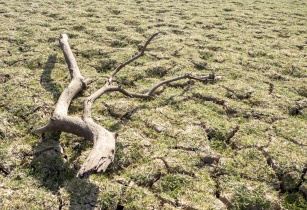Moctar Sacande, an expert in restoration at the UN’s Food and Agriculture Organization (FAO), called for urgent action to stop and reverse land degradation in Africa, at the Africa Climate Week
Sacande, who is also the international programme coordinator of Action Against Desertification in support of Africa’s Great Green Wall added, “We must bring back to life more than 200mn ha of degraded land, pledged by both the AFR100 and Great Green Wall initiatives, which are viable for restoration by 2030. It’s much more than tree-planting. It will bring huge social and economic benefits for rural farming communities and will build a bulwark against climate change. Restoring land back to productive good health and protecting forests is a huge and beneficial opportunity for Africa and it’s urgent.”
The continued loss of forest and the slow pace of restoration is highlighted in the newly-published report ‘Review of Forests and Landscape Restoration in Africa 2021’, a stocktaking of the work done so far and that which is ongoing. The Review was carried out in partnership with the African Union Development Agency AUDA-NEPAD, and calls for action on finance, security of tenure and continued commitment to protecting forests and other natural ecosystems and restoring degraded land to mitigate the impacts of climate change which threatens vulnerable people in Africa.
“The key is community engagement as well as equipment and technology. We ask the farmers first how they want to benefit,” said Nora Berrahmouni, senior forestry officer in FAO’s regional office for Africa and joint author of the report. Sacande stressed on the importance of using new technologies in combination with local knowledge and engagement as a key to success.
FAO brought in what’s known as a Delfino plough, which digs large half-moon shaped holes beyond half a metre deep with a raised edge and does so at scale. It makes soil more permeable for planting than digging by hand and allows a tenfold increase in rainwater harvesting.
The benefits are many when land is restored and forests are protected from clearance for more cropland.





